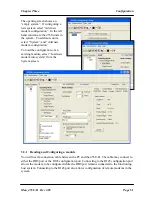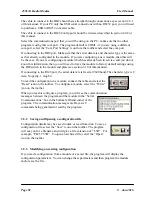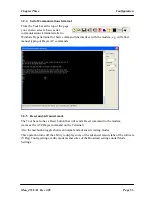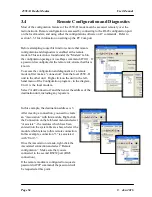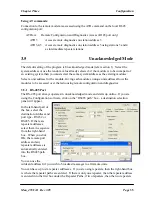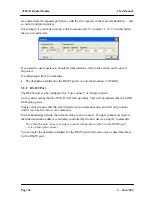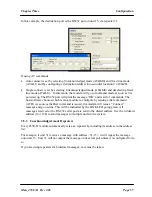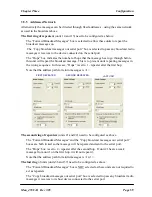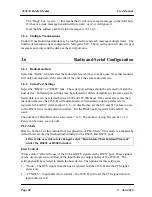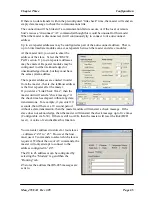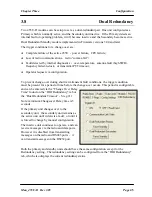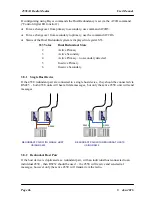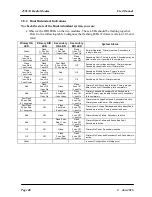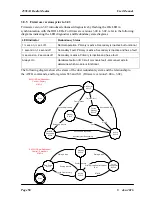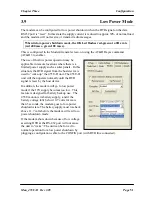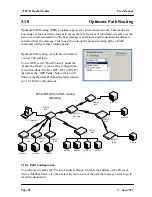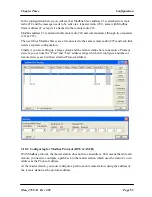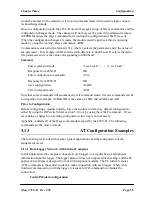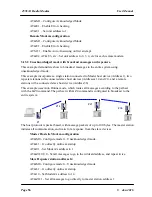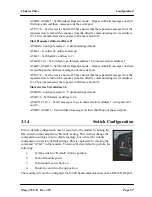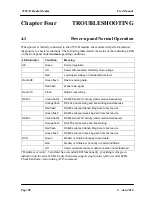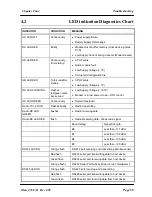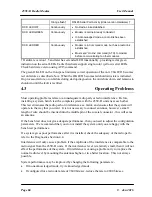
Chapter Three
Configuration
Man_455U-D Rev 3.05
Page
45
3.8
Dual Redundancy
Two 455U-D modems can be setup to act as a dual-redundant pair. One unit configured as a
Primary which is normally active, and the Secondary unit inactive. If the Primary detects an
internal fault or operating problem, it will become inactive and the Secondary becomes active.
Dual Redundant Standby mode is implemented in Firmware versions 3.00 and later.
The trigger conditions for a change-over are:
Complete failure of the active 455U - power failure, CPU failure;
Loss of radio communications - radio “comms-fail”;
Fault detected by internal diagnostics - over-temperature, antenna fault (high SWR),
frequency failed-to-lock, or transmitter PTT timeout;
Operator request via configuration.
To prevent change-over during short term transient fault conditions, the trigger condition
must be present for a period of time before the change-over occurs. This period is configurable
and can be entered via the “Change Over Delay
Time” found on the “DIO Redundancy” tab or
the “Dual Redundant Timeout” - S reg #11.
Note: minimum Changeover Delay time is 5
seconds.
If the primary unit changes over to the
secondary unit, the secondary unit remains as
the active unit until it detects a fault, or until it
is forced to change by manual configuration.
The inactive unit continues to operate, and can
receive messages via the radio and data ports.
However it is disabled from transmitting
messages on the radio and RS485 ports - it
can transmit messages on the RS232 port.
Both the primary and standby units should have the same configuration except for the
Redundancy setting. The redundancy setting can be configured from the ”DIO Redundancy”
tab, which also displays the current redundancy status.

